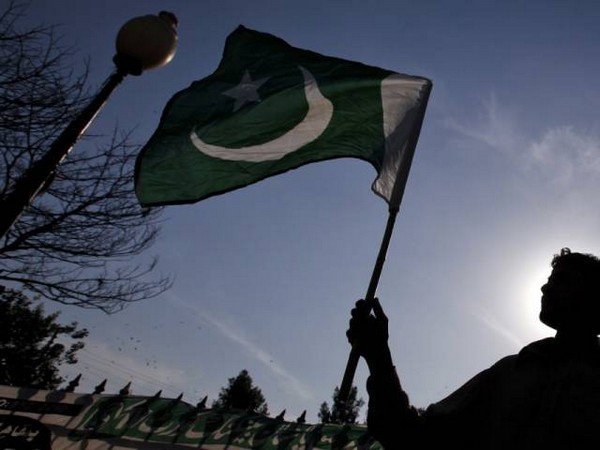NASA aims to unblock space station congestion as Sunita Williams remain stuck with Boeing Starliner for 50 days
Jul 27, 2024

New York [US], July 27 : NASA is grappling with an impending congestion at the International Space Station (ISS) due to recent delays and technical issues involving SpaceX and Boeing, as the space agency works to restore smooth traffic flow to and from the orbiting laboratory, New York Times reported.
NASA officials indicated on Friday that the next month is likely to see increased traffic at the ISS. This comes after a period of operational challenges that had temporarily stalled the agency's ability to transport astronauts. However, NASA officials have framed the situation positively, describing the expected congestion as a sign of progress.
Ken Bowersox, associate administrator of NASA's space operations mission directorate, remarked during a news conference, "We have never had so many vehicles and so many options. It complicates our lives, but in a really good way." This optimism comes despite a series of recent setbacks that have tested NASA's capacity to manage space station operations effectively.
The ISS has seen unusual activity recently, including propulsion issues with a new Boeing spacecraft and an emergency sheltering of astronauts due to debris from a defunct Russian satellite. Additionally, technical problems with spacesuits led to the cancellation of several spacewalks, and SpaceX faced a rocket failure that delayed its ability to transport astronauts.
One of the most pressing issues involves Boeing's Starliner spacecraft, which is currently docked at the ISS with two NASA astronauts on board. Sunita Williams and Butch Wilmore, who have been on an extended mission due to technical problems with Starliner's propulsion system, are expected to return to Earth soon. Their mission was originally scheduled to be shorter, but engineers have needed additional time to resolve issues with the spacecraft's propulsion system, which had malfunctioned during its approach for docking in June, according to New York Times.
The plan moving forward is to prioritise the return of the Starliner spacecraft to free up one of the two docking ports at the ISS. Dana Weigel, the programme manager for the ISS at NASA, explained, "I've got to take off a vehicle. And so our plan is undock Starliner first to free up a port."
The next SpaceX Crew Dragon mission, Crew-9, is set to launch no earlier than August 18. This mission, which will carry four astronauts for a six-month stay at the space station, will be the ninth such mission for SpaceX. Following Crew-9's arrival, another Crew Dragon currently docked at the ISS will return four of the station's current occupants to Earth, completing their six-month mission.
Before the Crew-9 launch, NASA and Boeing officials are focused on resolving issues with Starliner. Recent assessments revealed that the spacecraft's propulsion system experienced overheating issues, which affected Teflon seals and constrained propellant flow. Tests showed that the buildup of heat in the thrusters caused these seals to bulge, impacting performance. Additionally, degradation in the helium system's seals, caused by exposure to propellant vapour, was discovered in a test version of the Starliner service module.
The challenges with Starliner are part of a broader set of issues for Boeing, which has faced scrutiny over the spacecraft's performance. Despite these setbacks, NASA and Boeing officials have assured that there is no danger to the astronauts on board. The ongoing analysis aims to ensure that future missions will be free of such problems.
Steve Stich, programme manager of NASA's commercial crew programme, and Mark Nappi, who leads the Starliner efforts at Boeing, reported progress in understanding the spacecraft's propulsion problems. They are hopeful that the technical fixes will address the issues effectively.
In addition to the Starliner challenges, SpaceX encountered its own problems. On July 11, during a routine launch of Starlink satellites, the second stage of a Falcon 9 rocket suffered a liquid oxygen leak, resulting in the satellites being deployed into the wrong orbit. This incident marked the first failure of a Falcon 9 rocket since 2016, breaking a streak of over 300 successful flights.
SpaceX has since identified the issue as related to a pressure sensor line used for liquid oxygen. The company is working on a short-term fix, which involves removing the problematic line and sensor. On Thursday, the Federal Aviation Administration (FAA) granted SpaceX permission to resume Falcon 9 launches after concluding that the failure did not pose a public safety risk. The next Falcon 9 launch is scheduled for Saturday at 12:21 a.m. Eastern Time from Cape Canaveral Space Force Station.
NASA is coordinating closely with SpaceX to ensure that the design fixes for the rocket will ensure the safety of astronauts on future Crew Dragon missions. The agency's efforts are focused on addressing any technical issues to avoid further delays in astronaut transport.
As for Starliner, the spacecraft faces a critical test this weekend. Its thrusters will undergo a brief firing test to evaluate their performance and check if helium leaks have worsened. A successful test will lead to a final review by NASA before approving Starliner's return to Earth, New York Times reported.




















